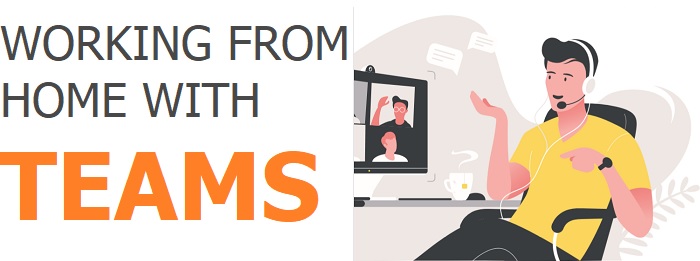Matt Rhodes from Quiss Technology looks at the benefits of using Microsoft Teams to help employees work from home.

The spread of coronavirus has forced employers to send workers home, as the government’s social distancing measures have changed the way businesses operate for the foreseeable future.
Whilst it isn’t a new practice, remote working on such a scale is unprecedented and some businesses may not have the technology needed to facilitate collaboration and communication between colleagues in different locations.
To work through this difficult period, businesses must introduce technology that allows workers to carry out tasks at home, without impacting productivity levels.
 Key features
Key features
Cloud-based platforms like Microsoft Teams have been designed as a virtual workspace, allowing employees to communicate freely and share information efficiently, with built-in features like video conferencing, allowing face-to-face meetings without the personal contact.
As a Microsoft product, Teams automatically integrates with your existing Office 365 programmes like Word, Excel, PowerPoint, SharePoint and Outlook, giving you immediate access to the services you rely on most. Featuring built in conversation channels, Teams makes it easy for colleagues to contact one another and receive quick responses, acting as a temporary replacement for the office ‘hallway chat’.
These channels can be separated by topic to keep conversations organised, allowing employees to find information efficiently, which will help them maintain their productivity during a period of uncertainty. Within these conversation channels, users can share files and documents with other participants, allowing them to receive feedback quickly and deliver work to the standards expected.
Maintaining productivity
Using Teams as a hub for communication and collaboration will enhance the productivity of your employees even though their opportunities to meet face to face have been temporarily reduced.
Whilst e-mails can also be used for communication and file-sharing, often the immediacy is lost in the inbox as responses are delayed or e-mails end up being filtered into the junk folder unwillingly.
Microsoft Teams has been designed to feel more like an engine room rather than a tool, offering businesses a streamlined way for their employees to share work and report back to the management team. In fact, one of the biggest advantages of Microsoft Teams is the reduced e-mail inbox clutter, as staff adjust to using the platform for work-based queries.
Remote working comes in different forms, with some employees choosing to set up a home office space with a desktop computer, while others will be using laptops and tablets to carry out their daily tasks.
Fortunately, Teams can be accessed across all devices, allowing employees to work using the comprehensive web interface or collaborate on the go using the customisable mobile app.
Online meetings and conferences
During these unusual times, one of the most significant challenges businesses must overcome is the removal of face-to-face meetings, conferences and daily interactions.
Although phone calls and e-mails offer an alternative, neither of these have the same impact or allow for the same level of collaboration, especially if participants need to work through a document or presentation together.
Recognising the importance of these meetings in keeping track of staff progress or maintaining client relationships, Microsoft Teams has sophisticated video calls and meetings features that allow multiple participants to communicate in one call. Once the meeting has begun and users have joined the video call, the ‘screen share’ feature can be used to display a file to all participants.
Another significant benefit of Teams meetings and conferences is the ability to record entire sessions, giving businesses a permanent record of the issues discussed.
Safety first
With businesses researching and implementing technology to accommodate remote working, there will naturally be some apprehension with regards to cyber security.
In most cases, employees will be using personal devices like mobile phones and tablets to access sensitive information and these won’t necessarily have the same security measures as the office desktop computers.
However, Microsoft Teams is built with the best cyber security standards possible and whilst no software can prevent all phishing attempts or malware attacks, Teams is constantly updating its security capabilities.
Moving with the times
The current situation means many businesses are facing an uncertain future, with no clear indication as to when social distancing measures will be relaxed. For this reason, it’s more important than ever that employers keep the wheels turning, giving their business the best chance of weathering the storm and coming out the other side strong.
With workers currently urged to stay home, technology such as Microsoft Teams will ensure that operations continue running smoothly and colleagues can keep delivering the work needed to retain clients and customers.
Matt Rhodes
Matt Rhodes from Quiss Technology, a Microsoft Gold Certified Partner with offices in the UK and Pennsylvania US, works with software vendors to help them develop their Software as a Service (SaaS) offering. He is a regular commentator on industry topics, covering subjects as diverse as cyber security, hybrid cloud solutions, new technology and the Code of Connection (CoCo).
Photo: Matt Rhodes